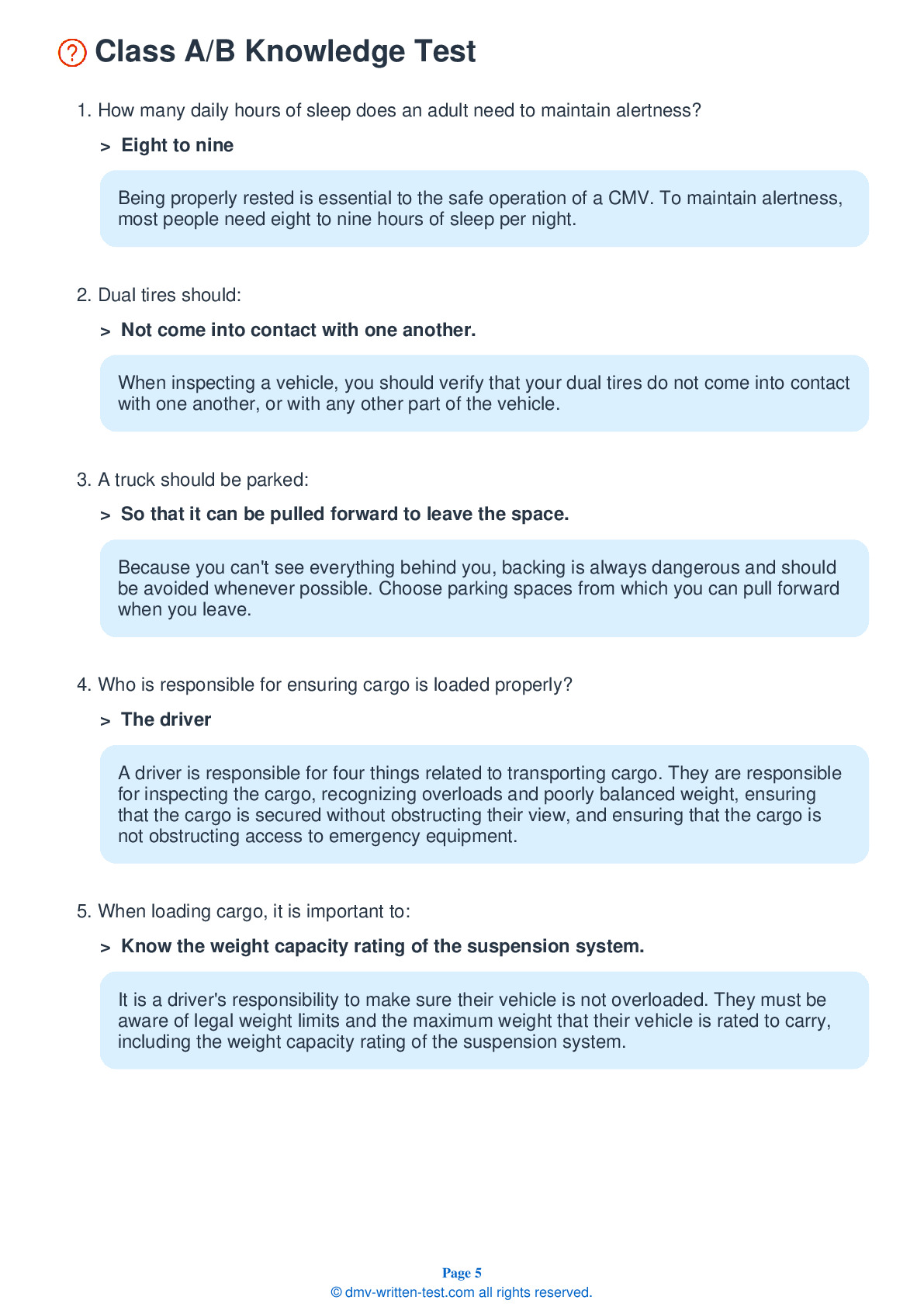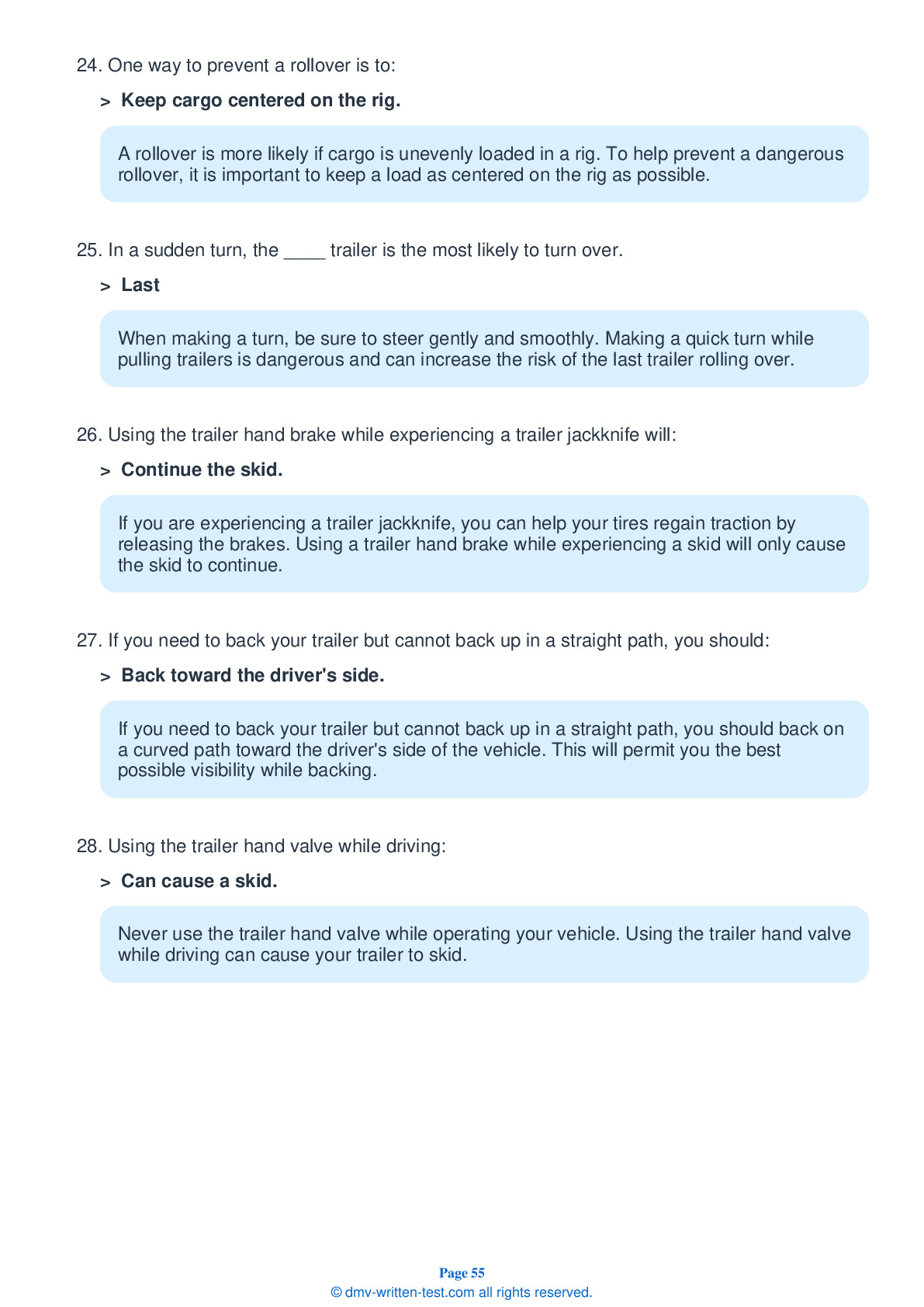Air Brakes
This endorsement is required for driving a vehicle with air brakes. To receive this endorsement, applicants must pass a written test. The test consists of 25 multiple choice questions. To pass, the applicant must answer at least 20 questions correctly. Test questions come from the Michigan Commercial Driver License Manual. Questions come from the chapter covering: Air Brakes. The Air Brakes endorsement may be used with the Class A, B or C CDL.
Number of Question
Passing Score
19. In a dual air brake system, if one air system is very low on pressure:
Explanation
In a dual air brake system, either the front or rear brakes will not be fully operable if one of the air systems gets too low on pressure. If the air pressure in either tank gets too low while you are driving, you should exit the road and park as soon as possible.
20. When parked on a flat surface, you should:
Explanation
When parking on a level surface, you should use wheel chocks. If the vehicle is not equipped with spring brakes, this is essential to prevent the trailer from moving.
21. While operating on a downgrade, you should brake until you reach a speed that is:
Explanation
While driving downhill, you should hold down the brake pedal until your vehicle reaches a speed 5 mph below your safe speed, then release the brake pedal. Repeat this process.
22. Air tank drains:
Explanation
Compressed air in an air brake system usually has a certain amount of water and oil in it. This can harm the system if allowed to accumulate. Air tanks have drain valves to aid in removing water and oil from the compressed air.
23. What color light indicates a vehicle's ABS is not working?
Explanation
On vehicles with Anti-Lock Braking Systems (ABS), yellow malfunction lamps alert the driver to ABS malfunction.
24. A dual air brake system:
Explanation
A dual air brake system is made up of two separate air brake systems. The systems share a single set of brake controls, but each has its own air tanks, hoses, and lines. One system typically operates the regular brakes on the rear axle or axles while the other system operates the regular brakes on the front axle.
25. Braking mechanisms are located inside:
Explanation




